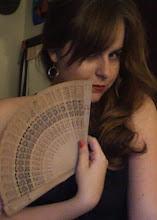#1: What are the five conditions that gave rise to the New Hollywood (here defined as post-1975)?
1. A new generation of directors 2. New marketing strategies
3. New media ownership and management in the film industry
4. New technologies of sound and image reproduction
5. New delivery systems
#3: Elsaesser argues that unlike in Europe, where ruptures in realism were found in art-cinema, in Hollywood ruptures in realism were found in “minor genres and debased modes.” What genre in particular is he talking about? In what ways do you find ruptures in realism in this genre?
The genre in particular Elsaesser is referring to is horror. Horror films disrupt the cause and effect patterns of shot/reverse shot, continuity and reverse field editing to create a sense of mystery and to mislead the viewer by withholding information or keeping the monster offscreen.
#4: How is the sound/image relationship in horror films fundamentally different than other classical genres?
In classical cinema, the sound and image synchronization replicates the question and answer pattern of linear narrative (viewer ids sound by picturing source), while in horror the presence of sound is emphasized so that the absence of source becomes localized by the mind more vividly (consider the monster scores from Halloween or Nightmare on Elm Street).#10: What is so important about the un-matched shot of Dracula looking up (without a matching point-of-view shot; we don’t see what he sees) in the opening sequence of the film? (p. 201) To what degree is this a break from classicism, and why?
The unmatched shot of Dracula looking up is important because the corresponding point-of-view shot is not seen until the end of the film, Dracula's gaze is not returned (by the painted image of his reunion with Elzbieta) until the events of the narrative have come to pass. The point of view shot functions not as a reocurring theme or as resolution but as a relay of gazes taking place across the narrative. In classicism the matching of gazes would be part of repetition and resolution (in Citizen Kane, for example, rosebud serves this purpose) but in post-classicism it serves as 'an elaborate relay of gazes' drawing the viewer's attention to the film as a medium rather than the film as a narrative.#12: What is the key technical device (hint: in cinematography) that leads to the “decomposition” of the image as representation and the screen as a bounded frame in Bram Stoker’s Dracula? How is the use of this device a break from classical cinema, and why?
The key technical device that allows decompostion of the image is superimposition. In classical cinema is is used to indicate a shift in time or space or internal monolouge. In Dracula, the superimposition does not function as a boundary marker.
1 comment:
Good.
#10: In a sense the unmatched shot is not that unusual for a horror film, which is itself is a rupture from within classicism (see your answer for #3 and #4). The question then becomes the degree of excess with the unmatched shot in question, and how this affects Dracula's gaze and the viewer's gaze across the course of the film.
#12: It will be helpful to return to this and explain how the superimposition does function in Dracula, in addition to how it does not. (You are correct about how it does not function as a boundary marker, as it does in classicism.) So what is the "decomposition" of the image? Easier to describe after seeing the film.
Post a Comment